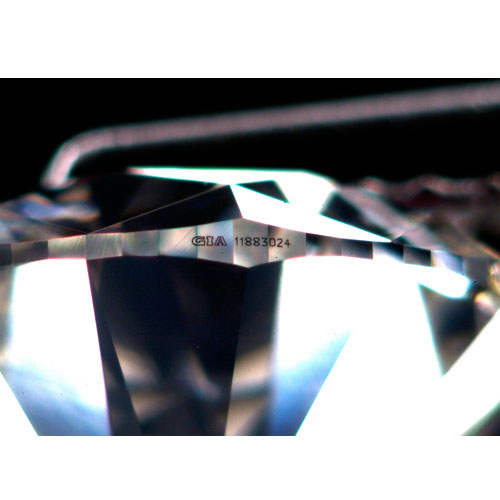
Gemstone treatments II (May – August)
March 10, 2016
Lessons on Holiday Jewelry buying
March 10, 20169) September/Sapphire – People don’t realize that Sapphire and Ruby are the same stone; when it’s red, the stone is called Ruby. Everything else is a Sapphire. Just like with Rubies, Sapphires are normally heated to improve their color. Also, because fashion changes everything, many candidates to become “Star” Stones (both Sapphire and Ruby) are disappearing. Many are heated to instead be sold as faceted Gemstones. The heating process “melts” the inclusions (called silk) that provide the Star formations, effectively ruining their chances to become stars.
10) October/Opals or Tourmalines – Opals have for years been given the bad reputation as being unlucky Gemstones. This is a fallacy. (On a different note, there are two types of Opal: Those that have crazed or cracked . . . and those that are going to, regardless of all the oils they get dunked into!) An Opal dealer once told me that an unknowing or unwise buyer of rough Opals could lose his or her entire investment on a bad purchase of Opal rough as it is so difficult to correctly gauge the value, one reason why so few do it, let alone do it well. Opals, both White and Black are occasionally treated with plastic on their outside portions.
The second stone, Tourmaline, is produced by nature in virtually any color. A dealer once said that if Tourmaline had been mentioned in The Bible like many other Gems, it would be worth triple today (as its supply dictates higher prices!) Although one variety – Paraibia – is normally worth much more than Diamonds, the other colors are very reasonably priced. While some of the dark red (Rubellite) has deceptively been exposed to light radiation to improve the color, right now no known enhancement is commonly used on these Gemstones.
11) November/Citrine Quartz – This is a brownish member of the Quartz family. It appears naturally in a light to very dark orangey-brown hue. Many times, it is also obtained by heating the purple colored Amethyst. This is a permanent result and helps to explain the “perfectly straight dividing lines” in many bicolor Ametrines.
12) December/Turquoise, Blue Zircon, Lapis Lazuli, Blue Topaz and Tanzanite – Many years ago, I found myself on the streets of Santa Fe, New Mexico. It is a very attractive town, full of wondrous people who are mostly Artisans and other Creative people; it is a very livable and physically beautiful town. One can see many Native American craftspeople there with their Silver and Turquoise jewelry wares for sale at any curb side on a blanket. A plastic treatment for darkening the hue of Turquoise was frequently being mentioned in the jewelry trade at that time. So here I am, just another loud-mouthed White man, wondering aloud, “I wish I knew if any of these Turquoise items have been treated with plastic . . .?” To which a Native American looked at me directly and said, “WE don’t do that because it’s aWhite Man’s deception . . .!” At that moment, I think I started to know how General Custer felt at Little Big Horn. I have since learned to swallow such smart remarks.
December has always suffered with an identity crisis for a birthstone; there have been five since I’ve been in the jewelry field. Turquoise is sometimes deceptively given a treatment in plastic to subtly improve its color-but not always. Blue Zircon almost looks like Blue Topaz to the uninitiated; a simple, light Blue Gem. (The stone is normally heated to darken the color in a permanent manner. It can be identified by a very strong “doubling” effect when viewed through the center.) Lapis is an opaque Gemstone (rock!) that is frequently dyed blue to improve the strength of its color, before it is often formed into beads for a necklace. There is also a man-made version; ironically, the “real” Gem has “fake” gold (Iron pyrite) while the fake Lapis uses real gold (?) Blue Topaz is one of the most prevalent Gemstones. It is regularly exposed to light radioactivity and then heated to bring out its light Blue color. (These are both permanent and safe treatments. They are conducted long before the ultimate consumer enters the equation.) This leaves our last stone, Tanzanite. Although it is a dark brown before heating permanently (and safely) brings out its pleasing Purplish-Blue or Bluish-Purple color, it is indeed becoming rarer as the legions of Tanzanite fans will attest. One sees it mainly in the Caribbean, especially offered by many Cruise Lines. Perhaps inclusion on this semi-official birthstone list was meant to give it more popularity.
Treatments and enhancements do change frequently; this is by no means a comprehensive list. (Although not indicative of the norm, some Gem Labs have experienced a treatment akin to that listed for Diamonds above: A “substance” that has a similar light bending ability as the “host” is inserted into many Colored Stones, making them appear to have much better clarities. The treatment itself is invisible, although it can dramatically improve the look of a Gemstone, which becomes more expensive.)
Again, while many enhancements exist, it’s only considered deceptive if the customer is not told.




